It started with a missed exit.
No biggie, I told myself. I’ll just take Cherry Street.
After exiting I-30, I headed toward downtown and the West 7th Bridge. I left my home for an interview at the Weekly offices, just north of the Cultural District, with 15 minutes to spare. Plenty of time, I thought. As I topped the bridge, I was forced to an abrupt stop. Construction had closed one of the two westbound lanes. The backup reached from the bridge to University Drive, almost a mile ahead.
I could only imagine how angry my interviewee was going to be at my lateness. But I left 15 minutes early!
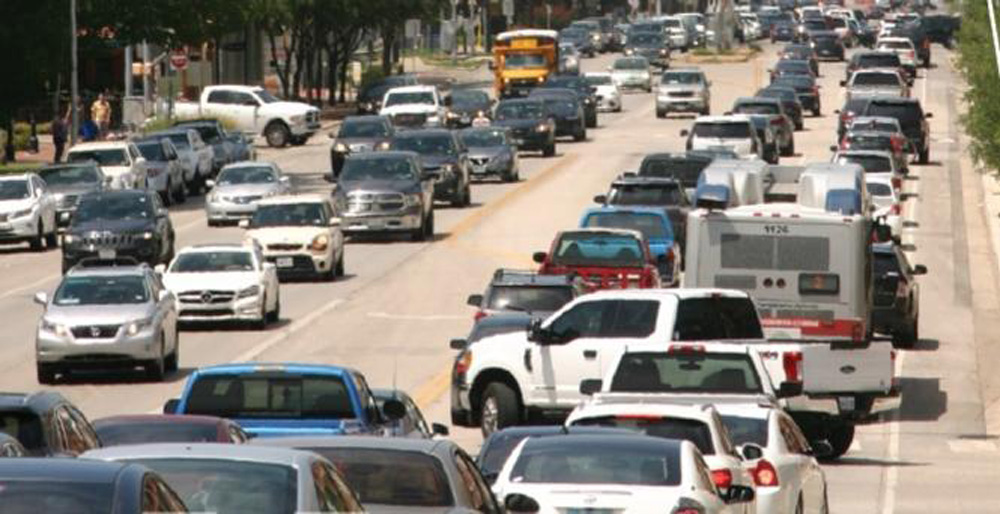
Photo by JEFF PRINCE
OK, I’ll just take some backroads, I thought as I turned into Montgomery Plaza’s parking lot. Several backed-up stop signs later, I was once again cruising toward the office. After 20 seconds of smooth sailing, I faced a line of 20 cars waiting to cross University near Austin City Taco Co. I did some quick calculations in my head. Each car would have to wait for both lanes of dense traffic to offer an all-too-rare opening for a Mad Max-level dash across University. That was my first mistake. I should have taken 6th Street because drivers can’t turn left onto University from 6th, only right.
I made a U-turn and hurried toward hopefully better prospects north. Hamilton Avenue was just as backed up. One block north at Bristol Road, I finally had access to University and an open route to the office. I was several minutes late. Our general manager nodded in agreement as I vented an expletive-laden description of my four-block slog through the West 7th Corridor.
West 7th is as packed with trendy restaurants, bars, and entertainment options as ever, and, on weekends, the parking garages and streets servicing the area are equally packed. One recent Fort Worth police proposal to reduce congestion — a ban on cruising — elicited backlash from locals who said banning lowriders and other tricked-out, slow-driving cars was lazy and racist public policy.
The local grassroots group United Fort Worth has been a leading critic of the proposal. On social media, United Fort Worth recently said, “Ticketing ‘cruisers’ won’t minimize traffic congestion, but it will disproportionately put people of color at a greater risk for racial profiling and unwarranted police interactions. The truth is that the problem of traffic congestion is NOT about cruising. It’s about the failure of city leaders to come up with comprehensive solutions that deal with root causes of traffic congestion and provide REAL funding for public transit.”
A spokesperson with Fort Worth police said in an email that “increased pedestrian and vehicular traffic” in the area has led to traffic issues.
“The [cruising] ordinance was already in existence in the Stockyards and proved to be an effective way to address those similar issues,” the spokesperson said. “It was asked if the ordinance could be modified to include the West 7th entertainment district. Bar and restaurant owners in the area” support the proposals.
The aim of the ordinance is to improve traffic flow, lower accidents, and reduce the number of calls for police service, the spokesperson continued. On Aug. 17, a last-minute decision was made to table the proposal, possibly because city officials didn’t want to hear dozens of speakers berate city council over what had quickly become a controversial ordinance proposal.
Recent U.S. Census data confirm what North Texans see daily — explosive population growth. Tarrant County’s population (2.1 million) grew 17% since the last census was taken 10 years ago. North Texas expanded by 1.2 million residents over the last decade, according to census data, and Fort Worth, the nation’s 12th-largest city by population, is pushing 920,000 residents. In a recent study by the Texas A&M Transportation Institute, which lumped Dallas and Fort Worth together for a ranking of the top metro areas with the worst traffic, DFW ranked seventh. Drivers in Fort Worth spend around 40 hours a year sitting in traffic, according to the report. Fort Worth drivers who have to make the crawl up I-35 toward Denton easily spend 40 hours per month angrily pumping their brakes to and from work.
The lack of a robust public transportation system is a top complaint our newspaper fields from local residents, but several new programs by the city and partner transit agencies like Trinity Metro are reshaping how people travel in and around Fort Worth. Trinity Metro’s The Dash, a brand-new fleet of all-electric buses, leaves the Fort Worth Central Station every 15 minutes to pick up and drop off passengers throughout downtown, West 7th Street, and the Cultural District. Another new initiative, ZIPZONE, is a ridesharing service that operates in select areas (basically, the Near Southside, several square miles just below I-20, and swaths of the Alliance area).
The fleet of black vans helps locals make the last leg of their commute once they arrive at a bus stop or hop off the newish TEXRail line that runs from Fort Worth’s T&P Station to DFW International Airport with several stops along the way. The upcoming 2022 bond election could allocate hundreds of millions of dollars toward repairing and upgrading roads and expanding capacity in rapidly growing areas like Alliance.
Mayor Mattie Parker said COVID-19 lowered ridership on The Dash, ZIPZONE, and TEXRail, but those numbers are now trending upward.
“There are several exciting transit projects coming our way in the near future, both big and small,” Parker continued. “I’m glad to see a neighborhood focus in the 2022 bond proposal where we plan to put millions into the sidewalks and streets in our neighborhoods.”
The controversial cruising ordinance has once again made public transportation a popular topic of discussion, so how is public transit shaping up, and what new programs can we expect in the coming years?
*****
On a recent drizzly morning, I downloaded the Trinity Metro ZIPZONE app, which looks and functions similarly to Uber’s. The closest service area covers the Near Southside and some surrounding neighborhoods, so I made the short drive to West Magnolia Avenue and parked near Avoca Coffee Roasters, which is near the middle of the mile-long stretch of bars, restaurants, and shops. I placed a pin where I was parked and requested a ride. The app asked me to walk 20 feet to the intersection of 6th Avenue and Magnolia. The ZIPZONE rides were free that day as part of a promotion that runs through Monday, Sept. 6. After that, the fees return to $1 to $3 per trip, depending on how far you travel. ZIPZONE is basically like Uber but with lower fees and a limited service area.
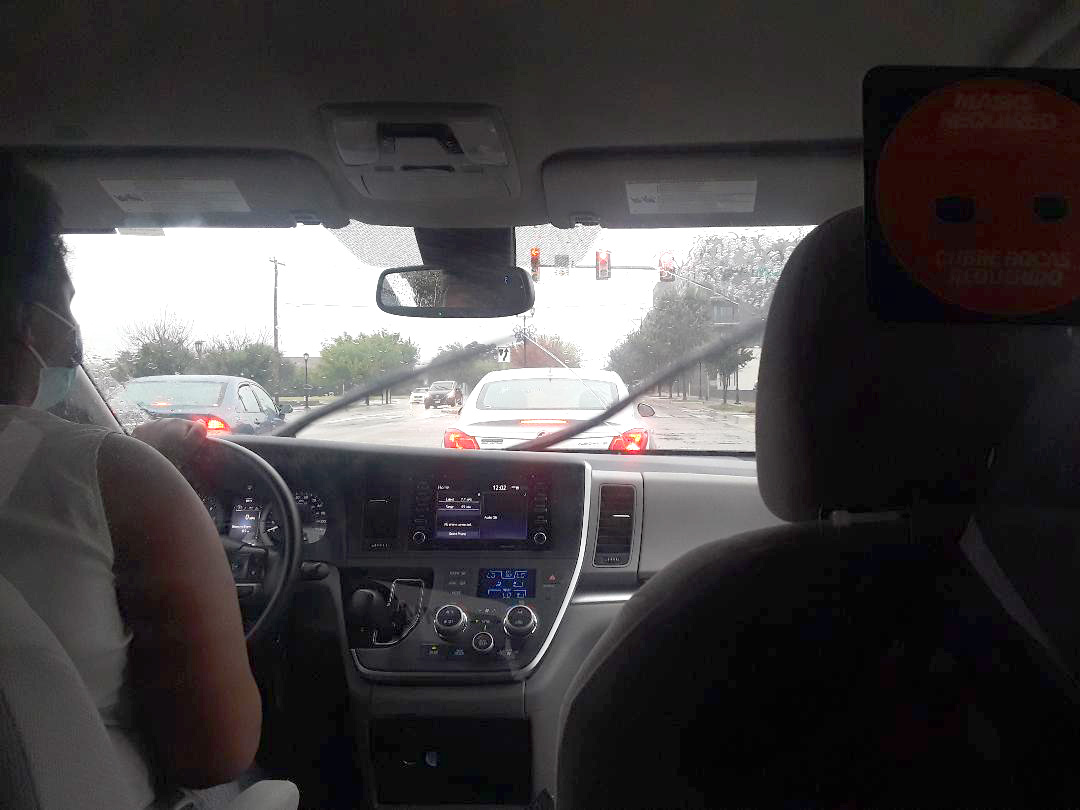
Photo by EDWARD BROWN
The app hailed a nearby van, and, three minutes later, I was on my way to Crude Craft Coffee Bar, about a mile to the northeast. The van was pristine inside and out, and the driver wore a facemask, which I appreciated. She apologized for her broken English when I asked some reporterly questions. She did say the ridesharing program was popular. At Crude, I chatted up the coffee bar’s co-owner, Corey Bloodworth. I showed him the app and explained that the service was free through Labor Day. He was genuinely impressed and admitted that he wasn’t familiar with ZIPZONE.
Public transportation is only useful if the buses, trains, and vans drop off riders within walking distance of their jobs. Workers who board TEXRail at Grapevine, for example, may not work near T&P Station, the final stop. ZIPZONE makes that final connection possible. The same is true for Trinity Metro’s fleet of buses that connect riders with drop-off points near major roads.
My mother recently found out about TEXRail. It takes about one hour to make the scenic and smooth ride from T&P Station to the airport, and rides leave T&P every half hour or hour, depending on the time of day. One-way trips on the new rail line are $2.50 while all-day passes are $5. A $2.50 TEXRail trip to the airport from downtown beats a $30 Uber or Lyft ride, and the light rail option offers the possibility of working on a device via the free Wi-Fi along the way.
I rode TEXRail to the airport and back soon after it launched in early 2019. The sleek train offers a quiet and incredibly bump-free ride. There are ample tables that commuters use to catch up on work as they glide from the Near Southside to the Stockyards, North Richland Hills, and downtown Grapevine. I wish TexRail would connect with the light rail system in Dallas. Trinity Metro’s double-decker TRE runs on a parallel route as the TEXTrail but with a final stop at American Airlines Center in Dallas.
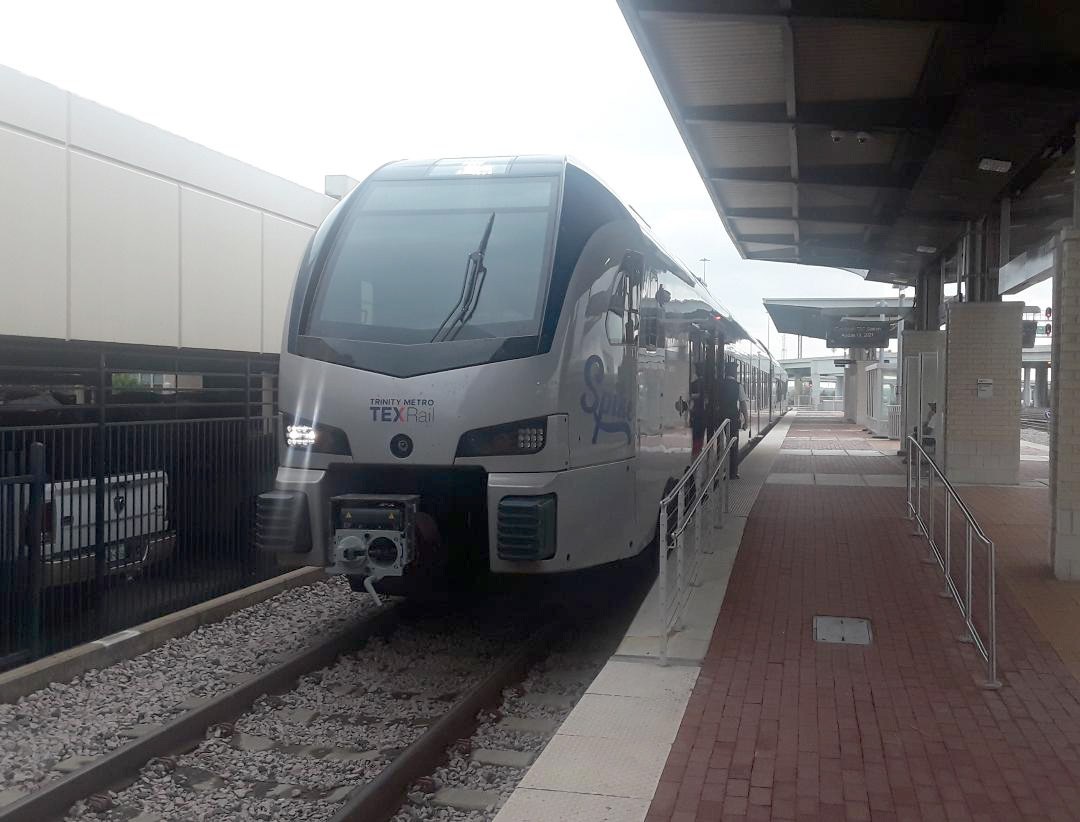
Photo by EDWARD BROWN
Fort Worth Central Station was bustling when I set out to hop on The Dash. The station is a hub for Trinity Metro and Greyhound buses, TEXRail, and other commuter rail lines. As a dozen Trinity Metro buses pulled up, I didn’t see the bright red Dash. The all-electric buses stop by every 15 minutes at the far end of the platform, as I was told indoor by a Trinity Metro attendant. As I reached the south end of the bus station, a bright red bus came around the corner. One woman stepped off as an older gentleman and I stepped on.
The bus made little discernible noise, and a sign in front of my seat read “Free Wi-Fi.” The driver said weekdays typically have fewer commuters but things pick up on weekends. My single trip to a downtown stop set me back $2. Day passes are $5. Lots of folks know about The Dash, the friendly driver told me. Like ZIPZONE, the public transit experience was prompt, clean, and on time.
“Thank you,” I told the driver as I hopped off, adding that she’ll see me using the service again.
*****
Fort Worth’s future transit options will depend on highway projects managed by the Texas Department of Transportation; high-speed transit options; city- and county-funded road expansions and repairs; public transportation options from Trinity Metro; and active transportation.
Active transportation encompasses walking, biking, and other non-motorized forms of getting around. Fort Worth City Council adopted the Fort Worth Active Transportation Plan in April 2019, and the top goal is to create a seamless network of on- and off-street bicycle and pedestrian options for locals of “all ages and abilities.” The plan also calls for “prioritizing funding and projects that include equity, health, safety, economic development, and access.”
The Fort Worth Bike Share program launched in 2013 with 30 stations and 300 rentable bicycles. The next year, 15 stations and 50 bikes were added, and 50 electric-assist bikes were added in 2019. Early last year, Weekly writer Steve Steward described his experience biking through town (“Steve’s Big Adventure,” Feb. 2020).
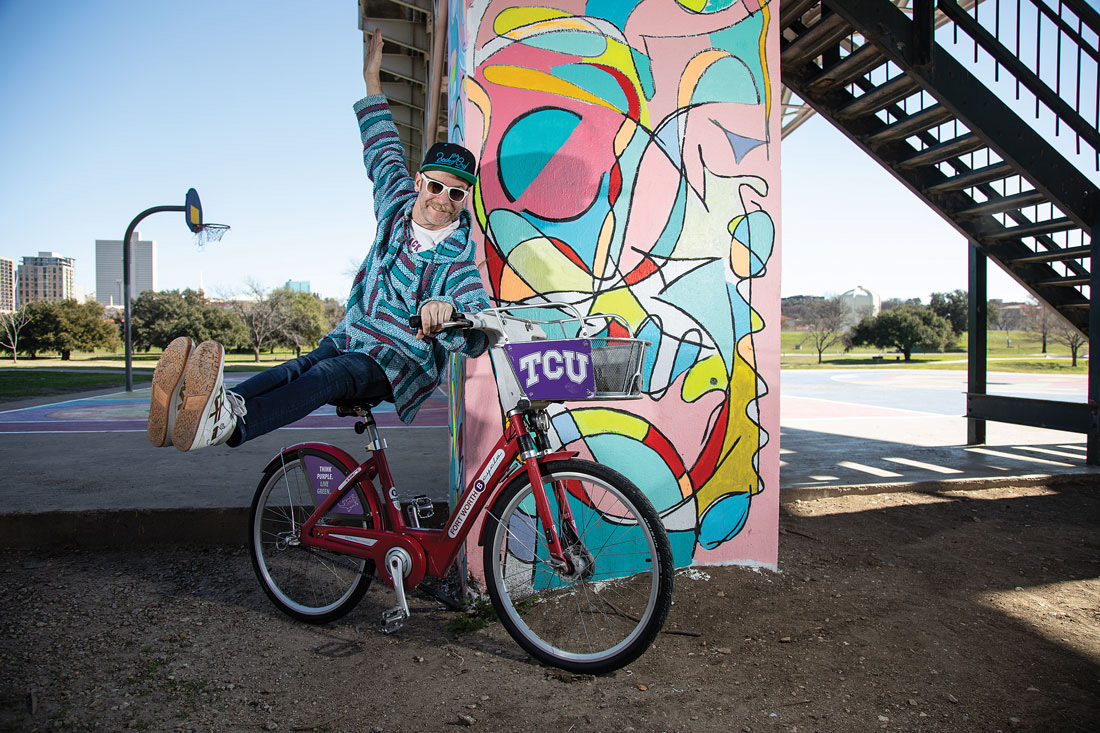
Photo by VISHAL MALHOTRA
“Riding the Clear Fork section of the Trinity Trails on that jolly red beast of a bicycle revived a place and time in my mind that I had once physically inhabited,” Steward wrote. “The effect was therapeutic. When you zone out on a bike over personally important geography, you have some moments to replay the past, both recent and not, and then you have to surface to call out, ‘On your left!’ at a couple walking a dog.”
A recent press release from the city describes an ongoing high-speed transportation study by the Regional Transportation Council, the independent transportation policy body composed of elected or appointed officials from across North Texas. High-speed rail and hyperloop are being examined as possible transit options that could one day shuttle passengers to and from Dallas and Fort Worth at speeds of more than 200 miles per hour. Hyperloop, which remains on the fringes of technology, places riders in a pod that is propelled through a large vacuum tube at speeds that could theoretically reach hundreds of miles per hour.
“The purpose of Phase 2 is to gain federal environmental approval of the preferred alignment and technology for the project,” read a public statement from the transportation council. “This includes conceptual and preliminary engineering and financial and project management plans.”
Fort Worth’s Master Thoroughfare Plan (MTP) provides a general outline for the city’s goals for constructing and maintaining thoroughfares, which the city defines as roadways that are used for “moderate length to long trips and moderate to high traffic volumes.” According to the city, the pillars of the MTP include mobility (increasing connectivity and capacity), safety (lowering automobile speeds near pedestrians and bicyclists), and opportunity (by serving “planned growth” areas).
Earlier this year, city staffers identified $400 million in transportation construction and upgrade costs and created a bond program proposal to fund the projects through direct contributions and cost-matching agreements with the county. The city currently plans to fund just over $200 million of the project as part of a larger $500 million bond proposal. Heading the proposal is Roger Venables, aviation director for the city. It’s an old job title that Venables fancied and decided to keep, he told me recently at a summer open house. The community meetings offered a chance for locals to shake hands with city leaders and staffers and to learn about upcoming programs like the 2022 city bond program, which Fort Worthians will vote on in May. In November, all of Tarrant County will vote on the county bond package.
“We have a number of transportation projects” that will be funded by the bond, Venables said. “These are streets that have been failing over time. One criterion that we used when gauging these projects is equity. We have some majority-minority areas out here that have faced significant challenges in terms of infrastructure. We are going to make sure this bond program addresses that. We have a number of projects that are related to capacity, so we are trying to ease traffic and congestion. The majority of that traffic is going to occur in the north end of town that has experienced the most growth.”
Venables said city staffers are closely watching whether Tarrant County voters pass the November bond.
“We are trying to get $200 million from the county,” he said. “Depending on which projects they move forward with, it may change our projects.”
The Nov. 2 ballot will allow Tarrant County residents to support Proposition A, which calls for the issuing of $400 million in bonds for constructing and rehabilitating streets, roads, highways, and bridges in Tarrant County. Mayor Parker said city staffers are planning years and decades into the future to ensure Fort Worthians have effective and equitable access to a variety of transit options.
“I’m proud of the strides Fort Worth has made in regards to mobility and transit opportunities,” Parker said. “We are recognizing that this city is in a phase that deserves a renewed emphasis on how we are meeting our infrastructure and transportation challenges,” Parker said. “As the second fastest growing big city in the nation, we cannot ignore the challenges created by population growth, and we must partner with the many brilliant, innovative groups and experts in this field to find and implement innovative solutions that meet the needs of generations to come.”
From my initial slog through West 7th-area traffic to my discovery of Trinity Metro’s new initiatives and the city’s upcoming bond proposal, I learned that providing transit options for a large city can seem like an uneven process, even with long-term planning.
The city’s “progress” depends partly on where one lives and how often one takes advantage of new services as they come online. New butts on public transit seats allow city leaders to justify further investment in infrastructure that can reduce pedestrian and auto accidents while slowing Climate Change.
After a recent visit with my parents, my 3-year-old daughter took the train back with her grandmother. Standing at the Fort Worth station, she jumped then laughed at an unexpected whoosh from a nearby train.
“Did you enjoy the train ride?” I asked as I lifted her up.
I did, she replied as we alternately made “choo choo” sounds on the way to the car.



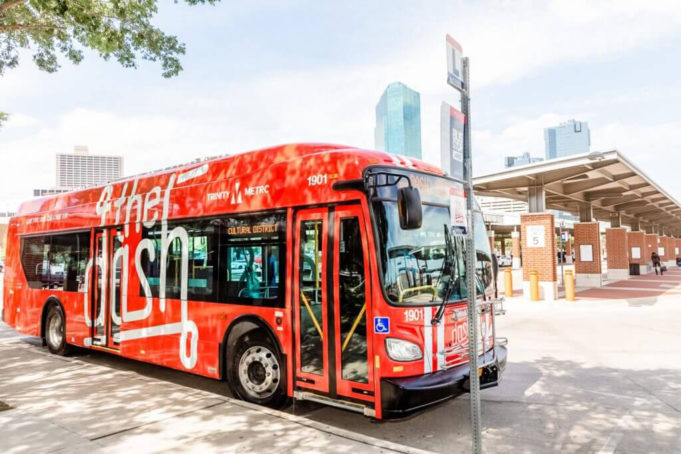

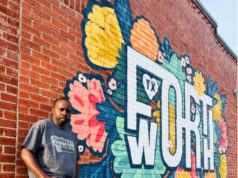
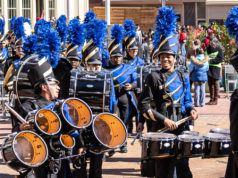






Remember how a bunch of us fought for years for better transit and almost had a streetcar approved until the suburban council reps and downtown business interests scuttled it despite strong support from the citizens *and* funding sources lined up because they couldn’t see past their own desire for dollars and their dreams of big new already-clogged highways?
Good times.